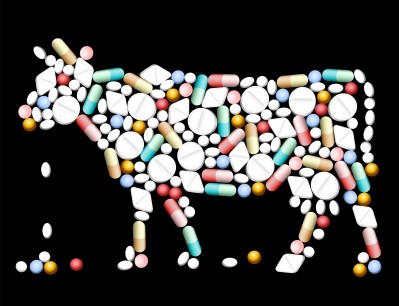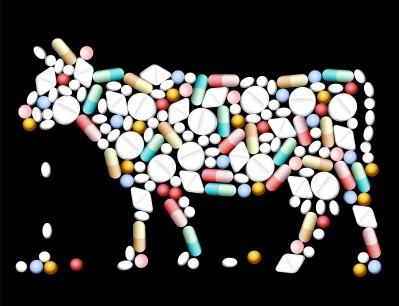Meat producers dispute benefits of US final rule on antibiotic reporting

The use of antibiotics in feed has been widely debated in the US due to concerns over growing antibiotic resistance in animals and humans to disease causing bacteria.
The finalized rule is part of ongoing work by the FDA to track the quantity of antimicrobials sold to livestock. It was originally proposed in May 2015 and is set to take effect in July this year.
“The new sales data [per category of livestock] will improve the agency’s understanding of how antimicrobials are sold and distributed for use in major food-producing species and help further .. efforts to ensure judicious use of medically important antimicrobials,” said the FDA.
Accuracy of data questioned
The National Chicken Council (NCC) and the National Cattlemen’s Beef Association (NCBA), while supportive of FDA efforts to encourage judicious use of antibiotics and to track resistance, question the value of reporting sales data per individual livestock species.
Chase Adams, director of communications, NCBA, told FeedNavigator: “We share the concerns about the accuracy of the information that will come out of this rule given the fact that these technologies are currently sold with FDA approved labels that allow application on multiple species,” he told FeedNavigator.
Research initiatives such as the NARMS [National Antimicrobial Resistance Monitoring System] and NAHMS [National Animal Health Monitoring System] reports [already] provide valuable information to the public, as well as to broiler chicken producers, said Ashley Peterson, senior vice president of scientific and regulatory affairs, NCC.
“The continued reliance on antimicrobial sales and distribution data unfortunately dilutes and distorts the information provided by NARMS and NAHMS, and [the] NCC believes that the collection of species-specific data would contribute to consumer confusion and negative perception regarding agricultural animal production without providing a public health benefit,” she said.
And Petersen said the Council was disappointed that more of the comments suggested by producers were not incorporated in the final rule.
Individual species
The rule updated reporting requirements for sponsors of drugs with active ingredients that are antimicrobial agents, said the FDA.
“Companies are now required to provide estimates of sales broken down by major food-producing species (cattle, swine, chickens and turkeys) in addition to the overall estimates they already submit on the amount of antimicrobial drugs they sell or distribute for use in food-producing animals,” the agency said.
The data submitted must also include the quantities distributed in the US and the quantities exported, the dosage form of the product and the amount of the antimicrobial ingredient.
Previously, drug sponsors had to report the overall amount of antimicrobials sold for use in food producing animals, but were not required to break the information down by species, said the FDA.
The agency said the change was designed to complement data collection plans being developed by the FDA as part of the National Strategy for Combating Antibiotic-Resistant Bacteria. “The collection of data from multiple sources, including enhanced sales data from antimicrobial animal drug sponsors, is important for providing a comprehensive and science-based picture of antimicrobial drug use and resistance in animal agriculture,” it added.







